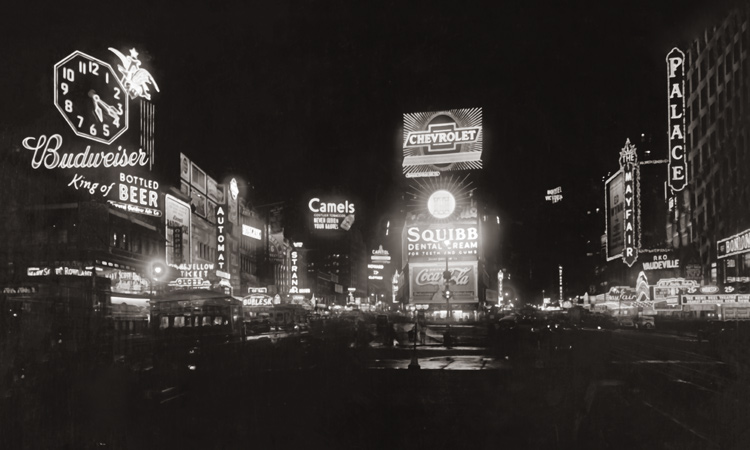Feature
OSA Centennial Snapshots: Broadway Lights Inspire Innovation
Before he dreamed up instant photography, OSA Honorary Member Edwin Land invented the first inexpensive synthetic polarizer. But that was only part of a larger mission.
 New York City’s Times Square at night, 1934. [Source: Library of Congress]
New York City’s Times Square at night, 1934. [Source: Library of Congress]
During the height of the Roaring Twenties, New York’s avenues blazed with cacophonous lights: red neon bulbs twisting themselves into advertising messages; flashing incandescent lamps swirling around theatrical marquees; broad automotive headlights swerving around pedestrians dodging their way through traffic; smooth store windows and street puddles randomly reflecting glare. Into this visual din stepped a college student nicknamed Din, temporarily blinded by the glare from oncoming cars, but permanently inspired by it.
…Log in or become a member to view the full text of this article.
This article may be available for purchase via the search at Optica Publishing Group.
Optica Members get the full text of Optics & Photonics News, plus a variety of other member benefits.

